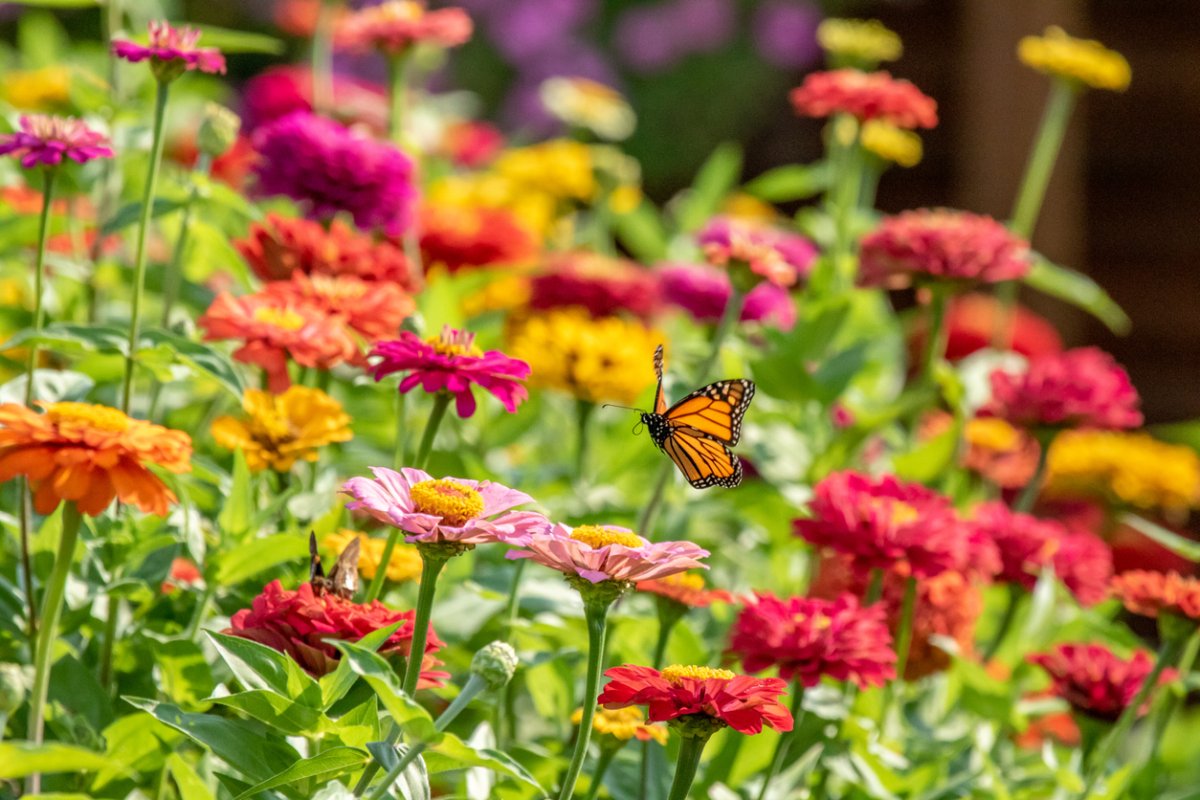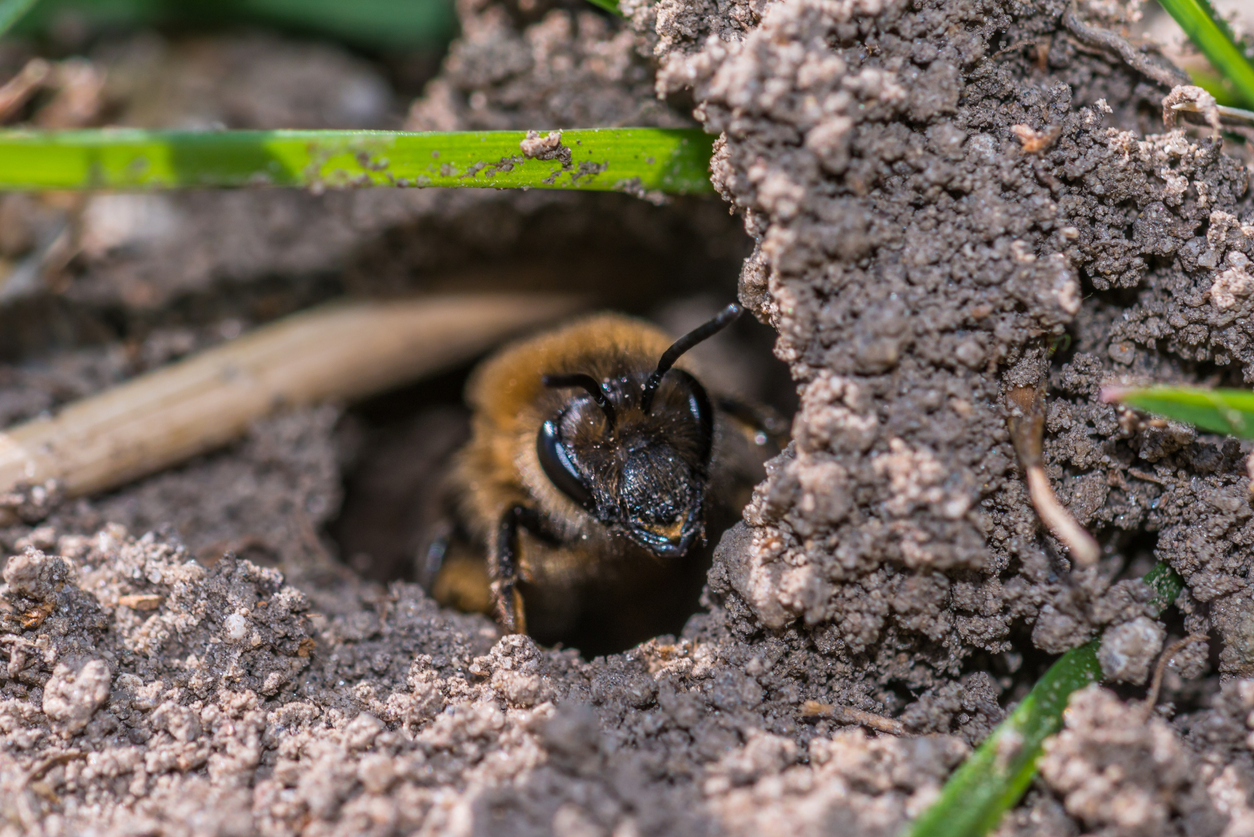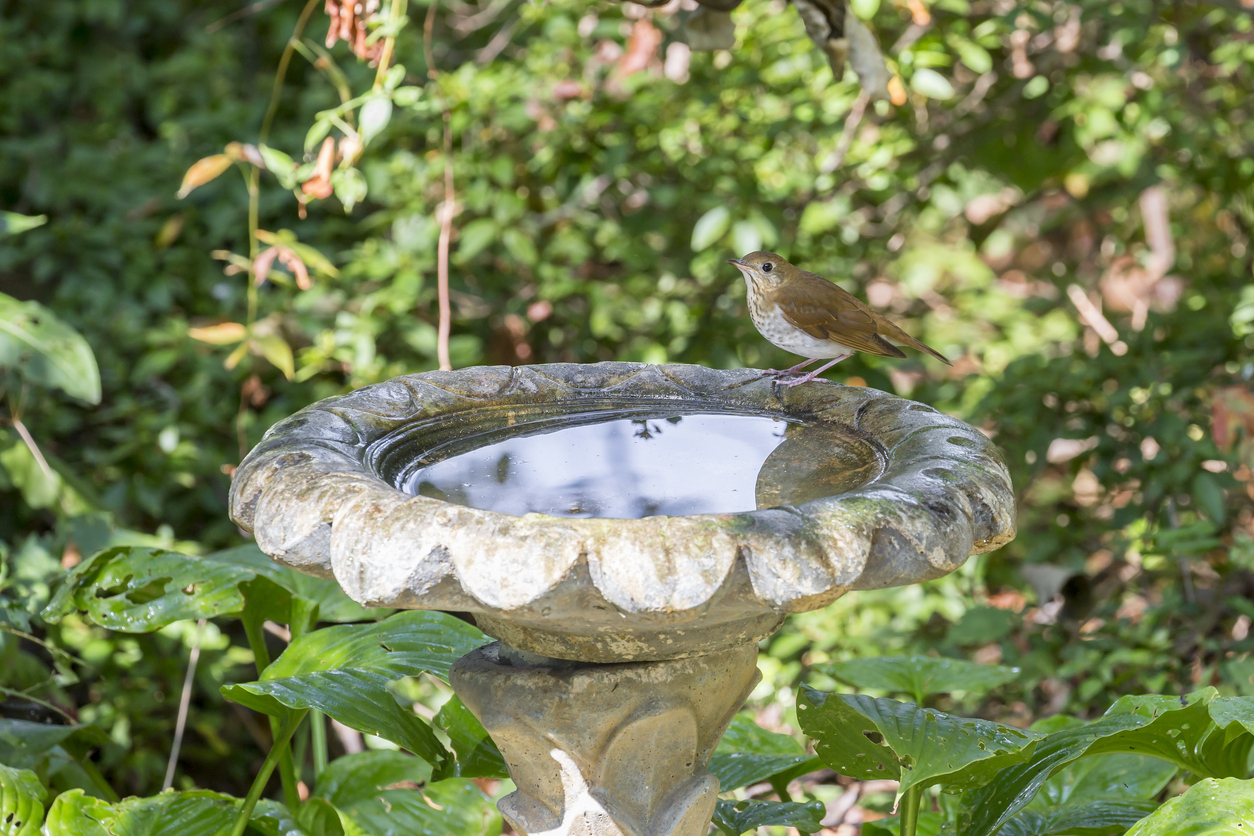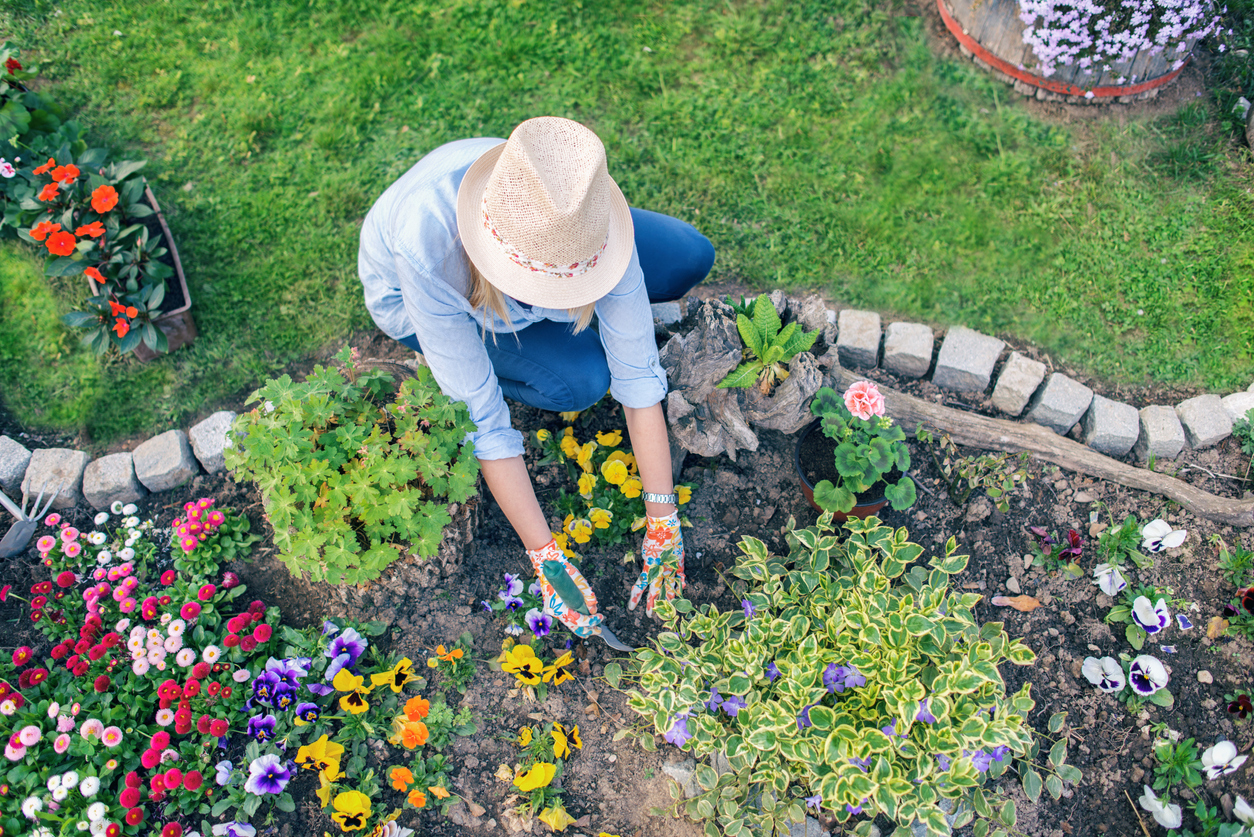

We may earn revenue from the products available on this page and participate in affiliate programs. Learn More ›
Pollinators are the keystones of healthy ecosystems. According to the USDA, at least 75 percent of the world’s flowering plants and 35 percent of food crops depend on animals’ plant pollination to reproduce. Without these hard-working bees, butterflies, birds, and even bats, many of the foods, fabrics, and medicines we use daily could not exist.
Pollinator decline is a critical issue on the minds of scientists, policymakers, and nature lovers alike. A 2021 study identified habitat destruction, agricultural management practices, pesticides, and climate change as some of the main drivers of disappearing pollinators. Many researchers agree that the environmental, economic, and human health impacts of this are enormous.
A recent study about the detrimental effects of pollinator decline on human health concluded that there is an “urgent need to promote pollinator-friendly practices.” One such practice is creating pollinator habitats.
The thought of a pollinator garden may conjure up images of bees dredged with pollen, feasting on nectar from colorful flowers. But to create successful pollinator gardens, it helps to think beyond just bees and blooms. For a green space—whether big or small—to truly be a pollinator haven, it should attract a diverse array of pollinating and non-pollinating creatures, and it needs to have food, water, and shelter—the trifecta of a complete habitat.
RELATED: How to Grow Milkweed
1. Food

A pollinator garden should offer diverse and abundant foraging resources in the form of pollinator plants. These are flowering plants that produce blooms with nectar, a source of carbohydrates and energy, along with pollen, a source of protein and essential nutrients.
Nectar and pollen are the primary foods of most pollinators, including honey bees and native solitary bees, the stars of the pollinator world. Most types of butterflies and moths eat nectar alone, and some species also feed on tree sap. Pollinating flies and beetles may dine on flower parts in addition to nectar and pollen, and hummingbirds and pollinating bats feed on insects, nectar, and pollen. Overripe or decaying fruit is another pollinator food source.
Pollinators need a variety of flower sizes, colors, and structures. The tongue lengths of pollinators vary greatly, so pollinator garden plants must include a range of various flower forms, including flat and open-faced (like coneflower), long and tubular (like salvia), and tiny clusters of pollinator flowers (like mountain mint).
Larval Host Plants
When deciding on plants for your pollinator garden plan, it’s essential to remember that you will need to provide forage, not just for adult pollinators, but their offspring as well. For a habitat to be truly pollinator-friendly, it must include egg-laying habitat plants for butterflies and moths that will have the food their larvae need.
Most caterpillars eat plant parts such as leaves from larval host plants. Host plants can be trees, shrubs, vines, flowers, or grasses, depending on the species. Native woody plants like trees and shrubs are particularly important larval host plants.
The Importance of Native Plants
Native plants form the core of a well-functioning pollinator garden. Native plants and local pollinators have lived and grown side-by-side for millennia and are a perfect match for each other. In addition to native plants’ role as the best sources of food for pollinating animals, the plants increase biodiversity by attracting other beneficial insects and wildlife such as songbirds. Native bee plants are adapted to a region’s soil, climate, and rainfall patterns, which means they are low maintenance once established and more likely to thrive than are non-native plants.
The best approach to choosing plants for a pollinator garden is to have a diverse array of open-pollinated, straight-species plants native to the local region and suitable for the landscape. A straight species plant means one that occurs naturally, without breeding or hybridization, and “open-pollinated” means that the plant is pollinated naturally by insects, wind, or rain. Both types are preferred to “nativars,” or cultivated varieties of native plants that may or may not support pollinators. So, choose as many native trees, shrubs, and flowering perennials as you can for a pollinator garden.
RELATED: 12 Plants With Year-Round Pollinator Appeal
2. Shelter

You don’t want your garden to be a pollinator drive-through—you want it to be a home, a habitat. That requires providing pollinators with a place of shelter for them to rest, get protection from the elements, hide from predators, and have their young.
Nesting Sites
Most native bees in North America build nests in the ground or in cavities such as beetle tunnels or hollow stems. Provide them areas of bee-friendly nesting ground by keeping patches of bare, undisturbed ground in the garden with no mulch or a thin layer of native mulch. Include plants with pithy stems in your garden, such as Joe Pye weed, add native ground covers for bee shelter, and leave perennials alone in the fall, waiting until spring to cut them back so cavity-nesting bees can use the stems over winter.
Dead Wood and Debris
Resist the urge to clean up fallen debris in your pollinator garden—you could be destroying pollinator communities. Dead wood and piles of brush are popular pollinator shelters and nesting places. Consider adding pieces of decaying wood or stumps to your garden as natural bee condos.
Leaf litter in particular is an invaluable aspect of a pollinator habitat, as it provides protection and insulation for pollinators to overwinter, shelter for a wide range of ground-dwelling beneficial species, and nesting sites for insects and ground-nesting solitary bees. Just be sure the leaf layer does not get too thick and matte-like.
Warm Resting Spots
Pollinating insects are cold-blooded, which means they have to rely on heat from their environment to warm them so they can be active. Butterflies in particular need to warm up in order to fly. Planting nectar plants in sunny spots and placing rocks in the garden where they can warm in the sun will provide welcome basking areas for butterflies and other pollinators.
3. Water

All types of wildlife need water, and pollinators are no exception. Water resources are an often overlooked but vital component of a pollinator habitat. Though pollinators use nectar as their primary source of hydration, including clean sources of water in a pollinator garden will help ensure the health and hydration of the pollinating wildlife.
Water Sources
Integrating a natural water source like a pond or stream with shallow banks and still water is an ideal way to provide clean water and encourage biodiversity in a pollinator garden. But if no natural water source is available, include a bird bath and shallow ceramic dishes filled with clean water and non-colored pebbles for insect landing spots. Be sure to keep the water vessel clean and filled with fresh water, both for the health of the wildlife and to keep down the mosquito population.
Puddling Stations
You may also consider creating butterfly puddling stations, patches of moist, muddy soil or shallow depressions in the earth sprinkled with water. These puddles provide butterflies with stations to drink and ingest essential minerals from the soil that they can’t get from nectar alone.
RELATED: 17 Types of Wildflowers Every Home Gardener Should Know
How to Plant a Pollinator Garden

Whether you have a wide, open lawn you want to meadowscape, a small city backyard plot, or a balcony container garden, you can do a lot to help your pollinator friends by providing a space where they can eat, rest, and thrive.
There isn’t a one-size-fits-all approach to how to make a pollinator garden. Every region, landscape, green space, and backyard is different. Keep the three essential components of healthy pollinator habitats in mind, and use the following steps as a guide to help you with your pollinator garden design.
- Choose a garden site with at least 6 to 8 hours of sunlight daily.
- Take the time to assess the space. Note the topography, existing plant life, and any areas that are sheltered or excessively windy.
- Learn about the pollinators in your area, especially those that are endangered or in need of support, and learn which plants house and feed them.
- Research native plant species in your region, and learn to identify non-native and invasive species—plants you want to keep away from your pollinator garden. The Xerces Society has excellent native plant learning resources and pollinator plant lists that you can filter by state.
- Select a mix of native plants with different shapes, sizes, colors, and bloom times when planting a flower garden. Try to add woody perennials and grasses, as well as flowering plants.
- Design the layout of the garden. Place taller plants at the back and shorter plants in the front. Plan to have a continuous succession of blooms by having at least three plant species in bloom at the same time throughout the growing season. Group species together to form pollinator targets.
- Remove any non-native or invasive species of plants from your garden site. You may want to sheet mulch the site to create a clean slate.
- Test the soil of your garden site to assess fertility and health, and amend the soil accordingly.
- Purchase your selection of native perennial flowers, shrubs, and trees (if you have the space) from a reputable native plant nursery or garden center.
- Plant for the mature size of your plants. Follow the spacing recommendations for each plant species to avoid overcrowding.
- Water the plants regularly as they get established.
- Add habitat features to your pollinator garden, including rocks, logs, brush piles, and water sources.
- If you choose to mulch, use an organic mulch such as leaf mold, and be sure to leave patches of bare ground mulch-free to support bee pollination from nearby nesting sites.
- Refrain from using pesticides, even those considered natural or organic.
- At the end of the growing season, leave some leaf or garden debris on the ground, and wait until spring to cut back perennial plants.
- Consider adding a sign to your garden that identifies it as a pollinator habitat.
